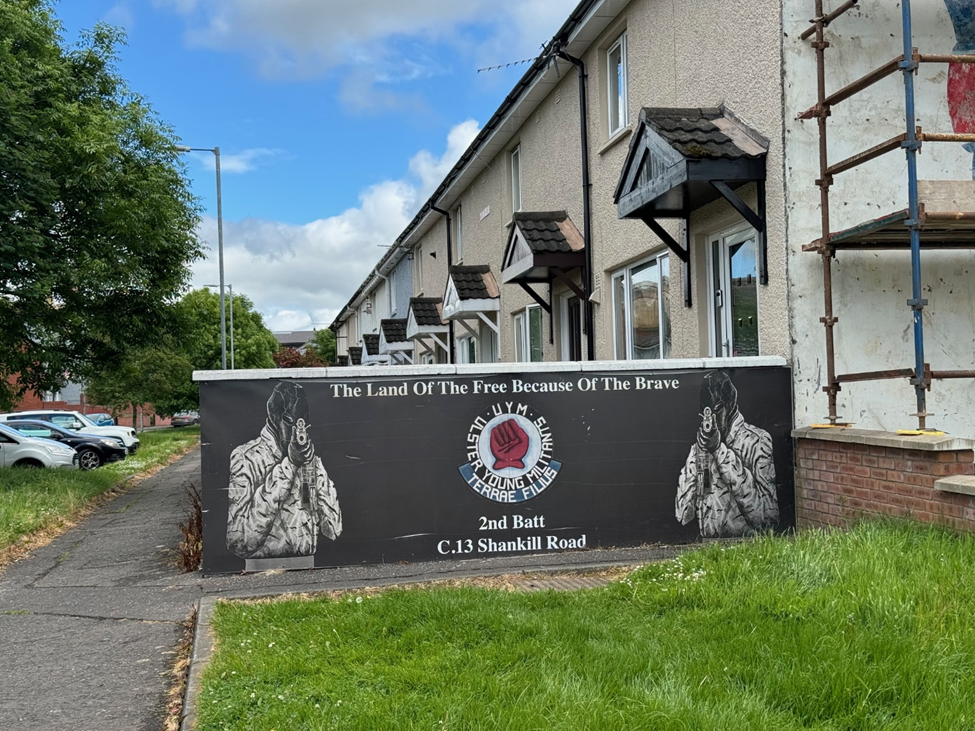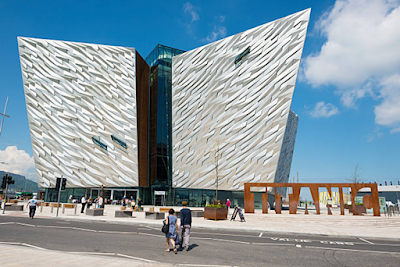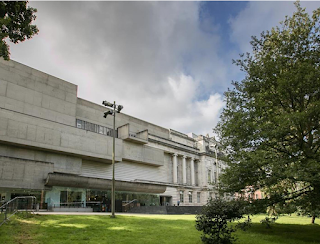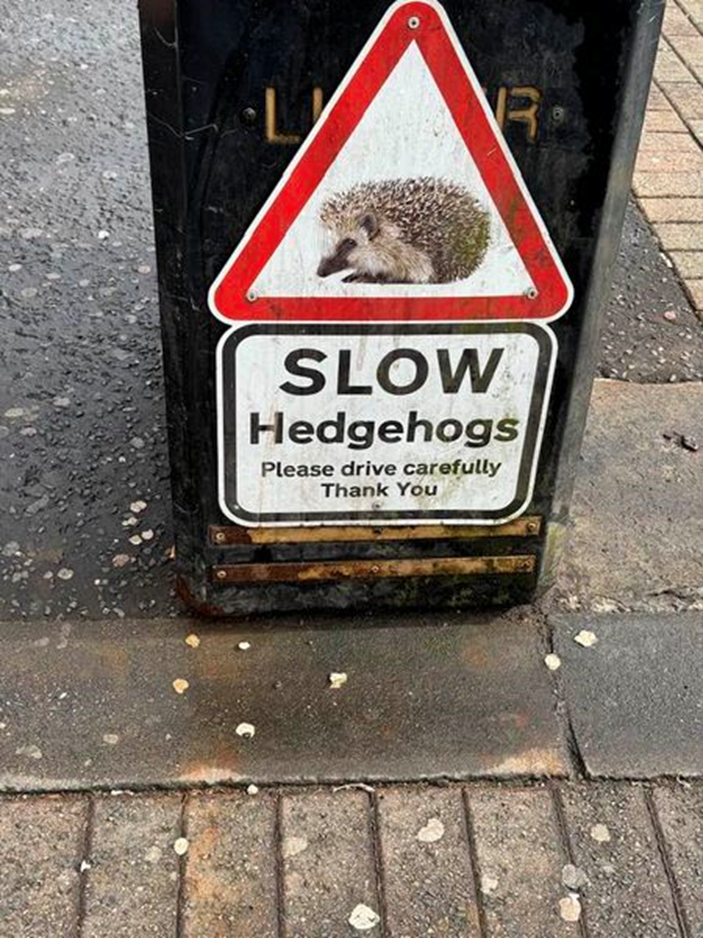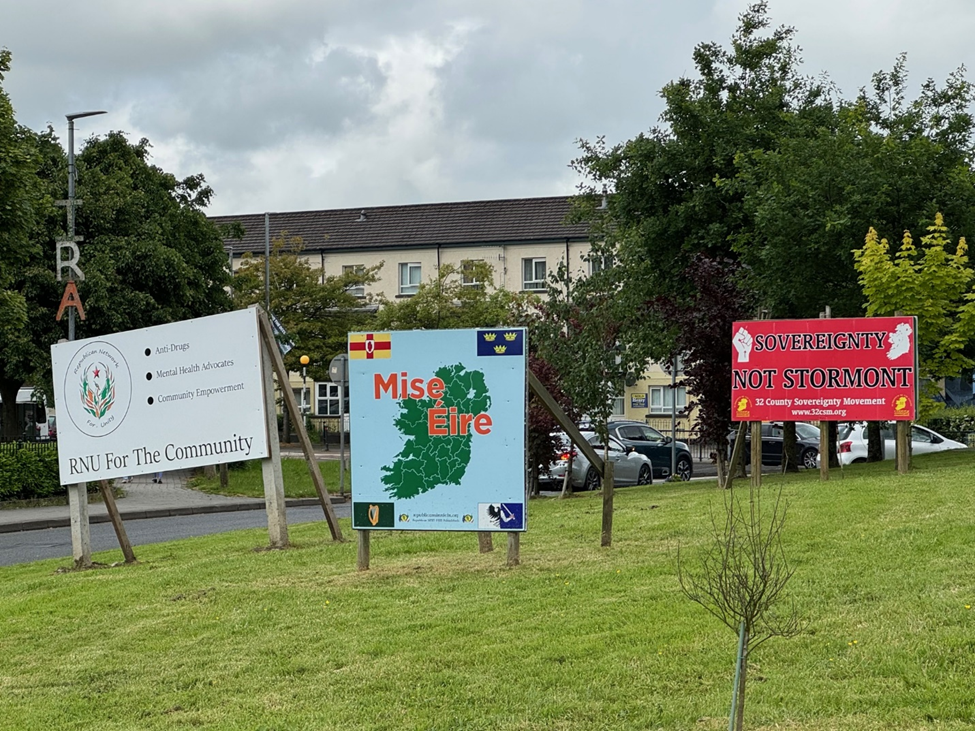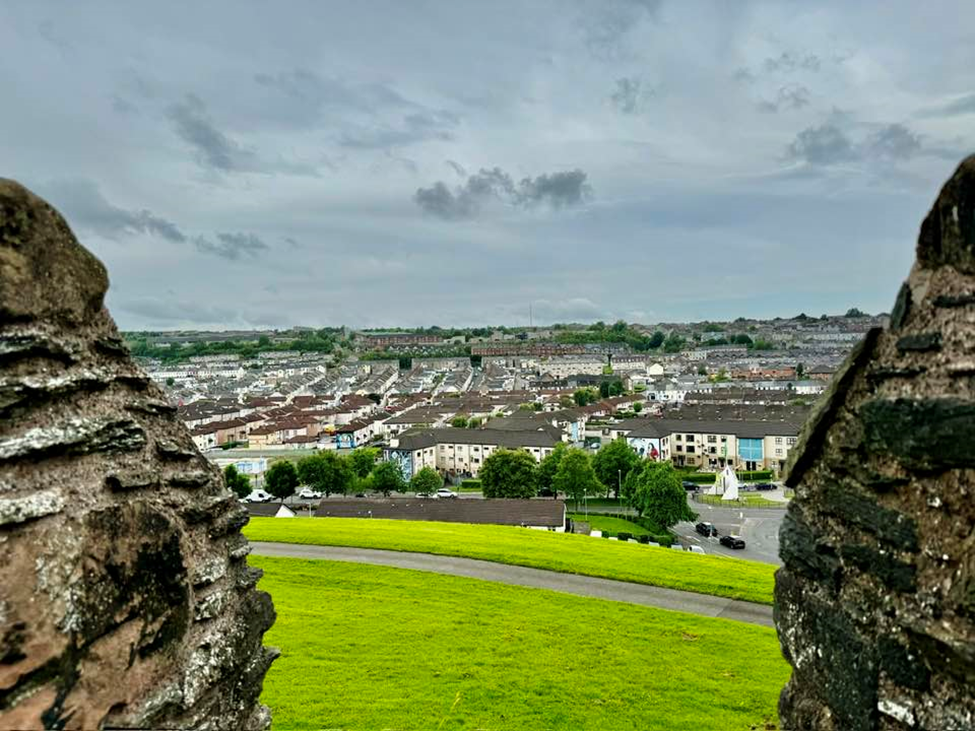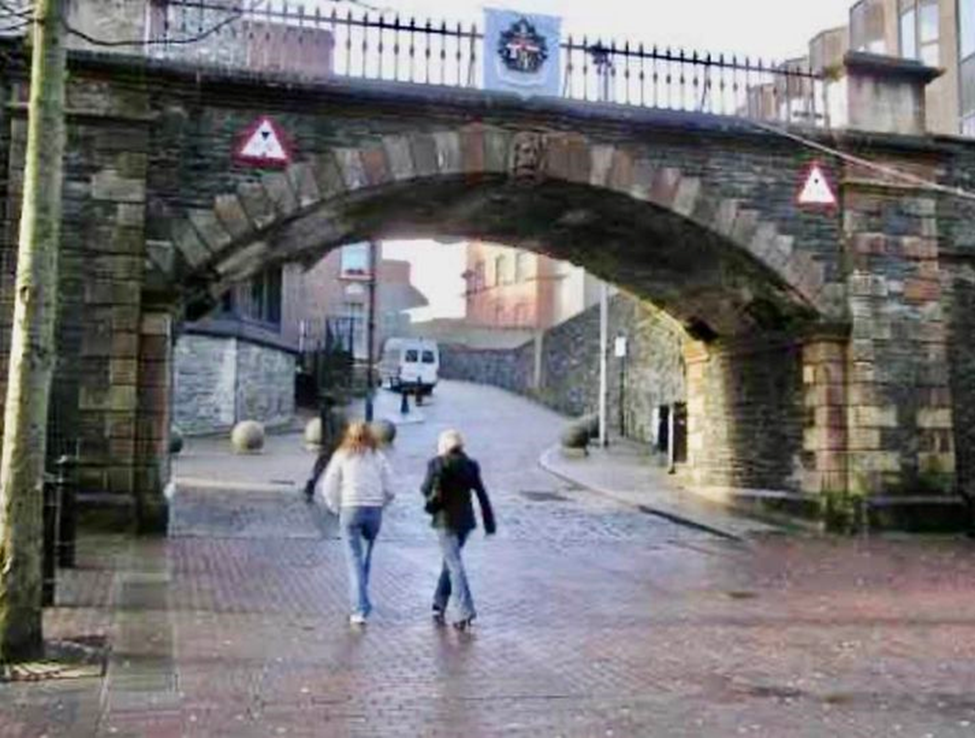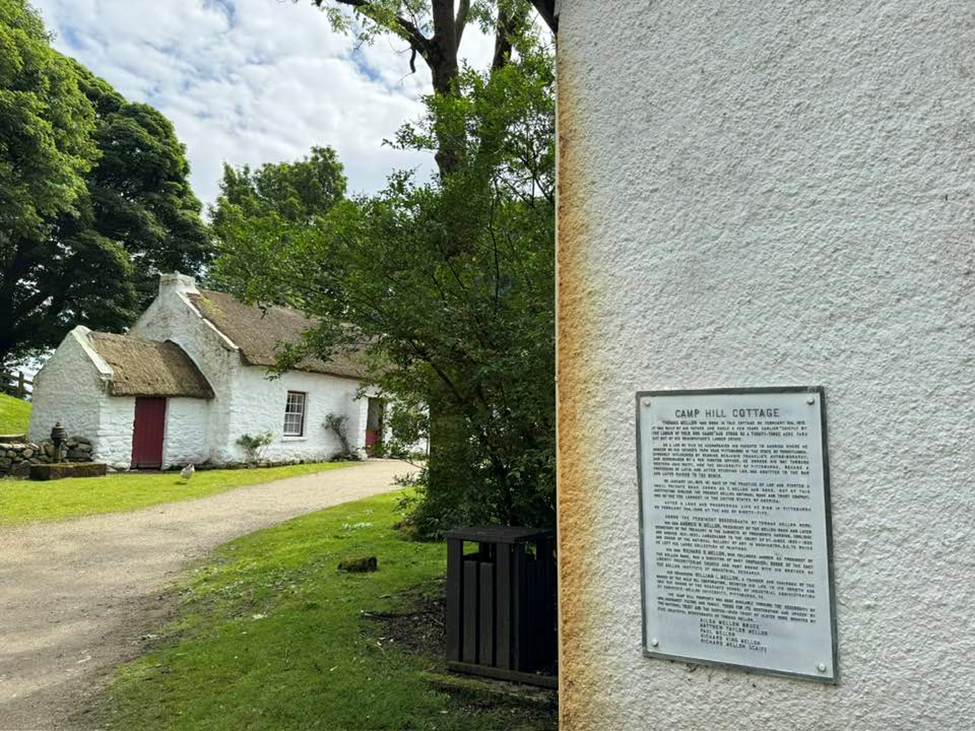NORTHERN IRELAND - BELFAST AND BEYOND AND OTHER PLACE TOO!
In late May 2024, I met my sister-in-law Kimbro Keck and her husband Michael Gray in Belfast. I could not find a 6-day tour of Northern Ireland, and I'd looked on many internet travel sites. So between the three of us, we designed a terrific tour that did not break the bank, and gave us plenty of time of important sites as well as the opportunity to go off the beaten track. Here's where we went, and what we did...
On the train from Dublin to Belfast … a fast 2 hours event with four stops
May 27, BELFAST
BLACK TAXI TOUR: There are a lot of locations in Belfast that relate to various aspects of The Troubles, which came to a crisis point in the late 1960s.. Many of the black taxis are driven by men who were teenagers at the time, and every family in the town was affected in some way. Many tour organizations offer a BLACK TAXI TOUR (GetYourGuide, Viator, etc) and it is an efficient way to see the town and hear the history of these difficult times in the 1960’s, 1970’s and 1980’s in a personal way. Here are some of the sights that we saw:
One
particularly powerful reminder of these times is this one “CLONARD REMEMBERS
AUGUST 1969”. Here is the inscription at
the bottom of this work: “These are terrible days… But some good
has already come from these attacks on our communities. You have young people
and elderly people all closely knit together, and that is a grand thing. We
must not allow hatred to spring up in our hearts. For what we are aiming for
now is justice. We demand justice. We are not begging for it – we are demanding
it. It is our right and we will keep on demanding it until we get it. Don’t ask
for anything more – just a fair deal… That we will soon have a community where
everybody, irrespective of religious belief or irrespective of political
ideology will be able to lead a normal life and will not be unjustly
discriminated against.” Father Patrick Egan, sermon in Clona Road monastery,
August 1969.
NOTE: It is interesting to see the history of the
conflicts in Northern Ireland, both epitomized by the stops on the black taxi
tour in Belfast, and the Bloody Sunday walk in Londonderry (later in this blog)
. It is clear that problems still remain, and equality of jobs and
opportunities are among those problems today, but all around you can see
tremendous progress that these communities can make and have made when they
actively turned away from conflict.
May 27 – after our “black taxi tour” of Belfast, we were
taken to the Titanic Museum. Our advance–purchase timed–entry tickets allowed
us the opportunity to have lunch at the nearby Titanic Hotel. We dined in the
area referred to as the “drawing rooms.“ Here, draftsmen created the intricate
designs for all parts of ships which were built in this enormous dockyard. This
is where the Titanic was created. Now, this administrative building has been
extensively restored, and is part of the hotel, used as the bar and dining
area.
Here is what the drawing room used to look like in its heyday…
Titanic Belfast is a visitor attraction that opened in 2012, a monument to Belfast's maritime heritage. It’s located on the site of the former Harland & Wolff shipyard in the city's Titanic Quarter where the RMS Titanic was built. It tells the stories of the Titanic, which hit an iceberg and sank during her maiden voyage in 1912. It took 26 months for 3000 people to build the ship. It sank in less than 3 hours. Part of the museum’s galleries are dedicated to explaining the commercial interest of the time, which was largely the trade in flax and linen after the cotton market in the USA was disrupted by the Civil War. This was the primary reason for the shipbuilding industry – to carry Irish flax/linen. The museum includes a Disney–like ride in elevated pods through various aspects of the museum (https://www.google.com/search?q=ride+in+tritanic+museum+images&oq=ride+in+tritanic+museum+images&gs_lcrp=EgZjaHJvbWUyBggAEEUYOTIJCAEQIRgKGKABMgkIAhAhGAoYoAEyCQgDECEYChigATIHCAQQIRifBdIBCDk1OTlqMGo0qAIIsAIB&sourceid=chrome&ie=UTF-8#fpstate=ive&vld=cid:d457959d,vid:Y9SZ1B--wSg,st:0)
An interesting experience, but not the major reason to go to Belfast, I
think…
The
Ulster Museum, located right inside the gates of Belfast’s botanic
garden and adjacent to Queen’s University, is a very well organized and well
curated museum that features the history and prehistory of Ireland. Its three floors are divided into the
categories of history, nature, and art. The museum has spacious corridors and
is full of light, but on the history floor it features many exhibits with
artifacts which children can touch. One of the best museums of its type I have
ever seen! Having just finished the extensive Smithsonian tour of the
Republic of Ireland, where our group heard not only prehistory but recent
history and everything in between, I found the exhibit on the Vikings to be of
special interest. A permanent
exhibition, “The Troubles and Beyond” looks at the history of civil and
political conflict in Northern Ireland.
The museum has a wonderful area where kids can put on authentic costumes, touch archeological objects, and just be kids!
And
then of course there is more history to learn about The Troubles
May 29 - as we leave Belfast, we’re extra alert on the roadways. I’ve been on the lookout for hedgehogs, however, and have not seen one. and then make our way towards the Antrim Coast Highway, reputedly one of the most beautiful drives in the island.
We drive past Stormont, which is the seat of government in Northern Ireland.
Antrim Coast Highway
May 29 - on the road! CarrickFergus Castle was built by Normans in
1177. The town was enclosed by ramparts at start of 17th century
and was the only English-speaking town in Ulster at the
time. King Fergus gave his name to
CarrickFergus, which means “the rock of Fergus“. Fergus established a kingdom
in West Scotland and East Ulster about AD 500. It is said that in AD 531 he was
returning to Ulster to take the cure for a skin disease at a medicinal well on
the large rock where Carrickfergus Castle now stands. His ship was wrecked on
the rock and Fergus was drowned. Carrickfergus was the most important town in
the northern part of Ireland between the 13th and 18th centuries. As an
administrative, trading and garrison center, it played a major role in many events.
This explains why Carrickfergus is the most excavated town in Northern Ireland.
Many fascinating discoveries have been made at numerous excavation sites in
town. Carrickfergus castle is one of Ireland’s best preserved medieval castles,
defending against invaders for more than 800 years. As you can see about the
notice from the local museum (below) some of the history here was pretty bloody
and ruthless.
BALLYGALLY - Ballygally Castle, reputed to be the oldest occupied building in Ireland, has a reputation for being haunted. It sits in the middle of the village at on the A2 coast road (Antrim Coast Highway) and today contains a 4-star hotel with a bar and restaurant. The castle was built around 1625 and is one of Ireland's best-preserved Scottish baronial style plantation houses.
Here is walk around the grounds of the castle – click on the
QR code
The
gardens are lovely to walk around, lots of photo opportunities! Kimbro and I enjoyed a quiet moment.
In Carnlough we stopped for a quick lunch at a café in the Harbour Lights center. You’ll have to ask Kimbro about her discussion with the women who own the café, and be sure to inquire about lunch with an extra chips order. Anyhow, Carnlough is a little resort town with buildings made primarily of white limestone, overlooking a small harbor surrounded by stone walls. Carnlough is surrounded on 3 sides by hills that rise 1000 feet from the sea.
May 29 - Between Cushenden and Ballycastle, we got off the A2
and went on small roads closer to the coast in County Antrim …very exciting to
navigate these curves (thanks Michael!). And you never know what you’ll
encounter! If you want to hear Irish spoken, listen to the sheep farmer at the
end of the video (click the QR code to see the video).
A quick stop for an
ice cream at Ballycastle. Usually a quiet town but people flock here in summer, notes quidebook.
Sometimes there is an artisan market in the seafront area.
Carrick-a-Rede Rope
Bridge – a photo stop
only because there is lots of commentary about long lines to get on the
bridge…like 3 hour waits…..and THEN you have to walk back over it!
The bridge connects the coastal cliffs to Carrick-a-Rede
Island.
 |
| Maybe next visit... or maybe never. Rope bridges not my thing! |
Onward to the Giants Causeway, where we stayed at a National Trust hotel that is a few hundred feet from this geological wonder.
May 30 - The Giants
Causeway is an extremely popular tourist stop in Northern Ireland, and is a
UNESCO World Heritage site. A geological wonder with over 40,000 interlocking
basalt columns, it was formed by intense volcanic and geological activity that
started about 60 million years ago; the formations are a result of the cooling
and shrinking of successive lava flows. Legend has it that the Giant’s Causeway
was carved out from the coast by the mighty giant, Finn McCool.
May 30 - After leaving the Giants Causeway, we headed onto back roads to Stranocum, a small village in north County Antrim, Northern Ireland, to see a scene beloved of Game of Thrones tv-series fans. “This beautiful avenue of beech trees was planted by the Stuart family in the eighteenth century. It was intended as a compelling landscape feature to impress visitors as they approached the entrance to their Georgian mansion, Gracehill House. Two centuries later, the trees remain a magnificent sight and have become one of the most photographed natural phenomena in Northern Ireland.
The iconic beech trees have been used as a filming location in HBO's epic series Game of Thrones®, representing the Kingsroad. (Featured Scene: Season 2, Episode 1: The North Remembers - On the King's Road, Arya Stark has escaped from King’s Landing, disguised as a boy. She is with Yoren, Gendry, Hot Pie and others who are to join the Night’s Watch, in a cart, travelling north on the Kingsroad.).” Courtesy www.discovernorthernireland.com
DERRY (LONDONDERRY)
May 30 -We arrived in Derry (Londonderry) in mid afternoon and immediately went on a walking tour that focused on “The Troubles”. The Battle of the Bogside was a riot that lasted for 3 days in 1969. Thousands of Catholic/Irish nationalist residents of the Bogside district, organized under the Derry Citizens' Defense Association, clashed with the Royal Ulster Constabulary (RUC) and loyalists. There is a lot to learn about this history, one of which sad episodes was BLOODY SUNDAY during which in one hour, 13 men and boys lay dead. There are many overtones of the Civil Rights movement of the 1960’s in the USA. It’s best that you do your own research to reach an understanding. If you go to Derry, do take a guided walking tour which focuses on the remaining murals, as it will give you important perspective. You’ll soon understand that in Northern Ireland, emotions about the British involvement here still run hot and high.
Here are some additional resources to learn
more about The Troubles in Derry:
https://museumoffreederry.org/
https://alphahistory.com/northernireland/battle-of-the-bogside/
https://materchristi.libguides.com/c.php?g=169418&p=1114532
The name Derry derives from the old Irish word DAIRE meaning
an Oak Grove, particularly an Oak Grove on an island surrounded by water or
peat bog. Such was the case at dairy. The original Oak Grove and the various
settlements which followed it were all located on a small hill, which was
formally an island in the river Foyle. By tradition, it is claimed that the
great Irish saint Columba founded a monastery on the island of Derry in 546
A.D. In any case, because of the association with the saint, Derry became an
important center of Christianity until the end of the medieval period. In the
early 17th century, the city of Londonderry was a jewel in the crown of the
Ulster Plantation. It was laid out according to the best contemporary
principles of town planning, imported from Continental Europe. Most
importantly, the city was enclosed by massive stone and earth fortifications.
Derry was the last walled town built in Ireland. Since then, the walls have
been a constant feature of the city’s life and has seen events both celebratory
and tragic. The walls have never been breached. Today, the walls provide an
elevated promenade from which to view the city.
May 30 - Magazine gate in the Derry Walls is one of three
additional gates which breach the city walls, created after drivers of
horse-drawn wagons complained about the sharp corner from Union Hall place to
Magazine Street. The new gate allowed a direct route from the quays to the
stores on Magazine Street. Magazine Street got its name from the ammunition
store.
May 30 - inside the Derry city walls, lots of shops, homes, and hidden courtyards and passages. Although enclosed by this medieval structure, the city inside the walls is active and vibrant.
May 31 - Ulster
American Folk Park …. on the route from Derry back to Belfast, we stopped for
several hours in Omagh to see this wonderful folk park. . This museum both re-creates a 19th century
Tyrone Village, and it also has the Mellon Centre for migration studies. The park is an open-air museum that explores the journey made by the
Irish (specifically those from Ulster) to America during the 1800s.
During the famine, when the potato crop failed, 50% of the
population died in one generation. Those
who could, immigrated.
With more than 30 exhibit buildings to explore, the museum tells the story of three centuries of Irish emigration. Using costumed guides and displays of traditional crafts, the museum focuses on those who left Ulster for America in the 18th, 19th and 20th centuries. The museum is part of National Museums Northern Ireland.
In the entrance building before going
into the open-air museum, the”Bad Bridget” exhibition told the stories of
thousands of women who left Ireland for North America between 1838 and 1918,
many of whom found themselves in trouble and struggling to survive. Very touching and heart breaking as well. (This may be a temporary exhibition… check
with https://www.ulsteramericanfolkpark.org/ to see what’s on when you go.
The demonstrations that take place showcase the day-to-day tasks and skills of those who lived in the era such as blacksmithing, candle-dipping, embroidery, spinning, printing and open hearth cooking.
Old World The Old World region includes whole streets of original houses, an original printing press, a bank, an old police barracks, the old Castletown National School, and two churches. Central to this region is the boyhood home of Thomas Mellon, judge and founder of the Pittsburgh banking dynasty. Some of the two-up, two-down houses in one of the reconstructed streets in the park were transported, in their entirety, from Sandy Row, off the Donegall Road in Belfast, and other buildings have been transported from elsewhere in the province.
New World. Linking the Old and New World sections of the park is
the Ship and Dockside gallery, which includes the Brig Union, a
full-size replica of an immigrant sailing ship.
Docents in the ship explained at non-privileged passengers slept 4 to a
berth.
Other more privileged passengers had a bit more room…
The historic atmosphere of this park continues in the New World area, which features a recreated old American street with original interiors of stores…. And a reminder that the forebears of the Mellon Bank family were part of the great immigrant story.
June 1 - it’s been great traveling in Northern Ireland with
my sister-in-law, Kimbro Keck, and her husband Michael Gray. We had a wonderful
final evening at the Fitzwilliam hotel in Belfast. Kimbro and Michael headed in
their trusty station wagon to catch the car ferry back to Scotland, with a long
drive back to London from there. We saw an astounding variety of landscape,
wonderful castles and buildings, and learned a lot about Iron Age, medieval,
and current Northern Ireland history. In the background as they depart our
hotel you can see the Assembly Building, built in 1905 in the Gothic style, and
opened by the Duke of Argyll. It is dominated by a 130-foot high clock tower,
which contains Belfast's only peal of 12 bells. It is home to the General
Assembly of the Presbyterian Church in Ireland.
June 1 - Pippi and I are on the train from Belfast to Dublin, looking forward to a few wind-down days before we leave Ireland.
To see the first part of this trip to Ireland - the southern part of the island, also known as the Republic of Ireland, click here:

